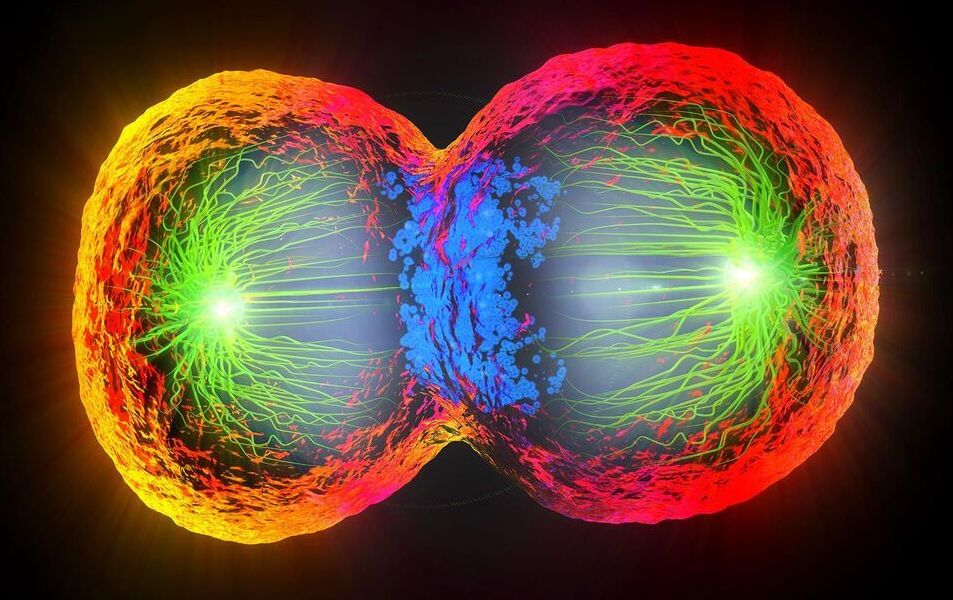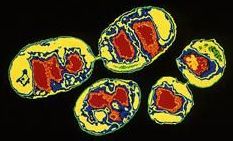Plastic bottle becomes industrially useful product thanks to biosynthetic transformation.



For tens of thousands of years, a microscopic creature lay frozen and immobile underground in the Siberian permafrost.
Yet, when scientists thawed it out, the tiny multicellular animal didn’t just revive — it reproduced, suggesting that there is a mechanism whereby multicellular animals can avoid cell damage during the freezing process and wake up ready to rumble.
“Our report is the hardest proof as of today that multicellular animals could withstand tens of thousands of years in cryptobiosis, the state of almost completely arrested metabolism,” said biologist Stas Malavin of the Soil Cryology Laboratory at the Institute of Physicochemical and Biological Problems in Soil Science in Russia.

Bdelloid rotifers are multicellular animals so small you need a microscope to see them. Despite their size, they’re known for being tough, capable of surviving through drying, freezing, starvation, and low oxygen. Now, researchers reporting in the journal Current Biology on June 7 have found that not only can they withstand being frozen, but they can also persist for at least 24000 years in the Siberian permafrost and survive.
“Our report is the hardest proof as of today that multicellular animals could withstand tens of thousands of years in cryptobiosis, the state of almost completely arrested metabolism,” says Stas Malavin of the Soil Cryology Laboratory at the Institute of Physicochemical and Biological Problems in Soil Science in Pushchino, Russia.
The Soil Cryology Lab specializes in isolating microscopic organisms from the ancient permafrost in Siberia. To collect samples, they use a drilling rig in some of the most remote Arctic locations.

The hard, magnetic teeth of a leathery red-brown mollusk nicknamed “the wandering meatloaf” possess a rare mineral previously seen only in rocks. The mineral may help the mollusk — the giant Pacific chiton (Cryptochiton stelleri) — meld its soft flesh to the hard teeth it uses for grazing on rocky coastlines, researchers report online May 31 in Proceedings of the National Academy of Sciences.
C. stelleri is the world’s largest chiton, reaching up to roughly 35 centimeters long. It is equipped with several dozen rows of teeth on a slender, flexible, tonguelike appendage called a radula that it uses to scrape algae off rocks. Those teeth are covered in magnetite, the hardest, stiffest known biomineral to date: It’s as much as three times as hard as human enamel and mollusk shells.
Materials scientist Derk Joester and colleagues analyzed these teeth using high-energy X-rays from the Advanced Photon Source at Argonne National Laboratory in Lemont, Ill. They discovered that the interface between the teeth and flesh contained nanoparticles of santabarbaraite, an iron-loaded mineral never seen before in a living organism’s body.


PROCEEDINGS OF THE ROYAL SOCIETY • JUN 3, 2021
Culture drives human evolution more than genetics
I wonder about the thought that only humans do this, and perhaps that somehow culture is separate in some way from biological evolution enmeshed with the rest of the planet?
by University of Maine
Culture is an under-appreciated factor in human evolution, Waring says. Like genes, culture helps people adjust to their environment and meet the challenges of survival and reproduction. Culture, however, does so more effectively than genes because the transfer of knowledge is faster and more flexible than the inheritance of genes, according to Waring and Wood.
Waring and Wood say culture is also special in one important way: it is strongly group-oriented. Factors like conformity, social identity and shared norms and institutions—factors that have no genetic equivalent—make cultural evolution very group-oriented, according to researchers. Therefore, competition between culturally organized groups propels adaptations such as new cooperative norms and social systems that help groups survive better together.
According to researchers, “culturally organized groups appear to solve adaptive problems more readily than individuals, through the compounding value of social learning and cultural transmission in groups.” Cultural adaptations may also occur faster in larger groups than in small ones.
With groups primarily driving culture and culture now fueling human evolution more than genetics, Waring and Wood found that evolution itself has become more group-oriented.
“In the very long term, we suggest that humans are evolving from individual genetic organisms to cultural groups which function as superorganisms, similar to ant colonies and beehives,” Waring says. “The ‘society as organism’ metaphor is not so metaphorical after all.

## MATHEMATICS • MAY 24, 2021
# *Noise is commonly discarded, but identifying patterns in noise can be very useful.*
*Generalize the Hearst exponent by adding more coefficients in order to get a more complete description of the changing data. This makes it possible to find patterns in the data that are usually considered noise and were previously impossible to analyze.*
*The development of this mathematical apparatus can solve the issue of parameterisation and analysis of processes for which there is no exact mathematical description. This opens up enormous prospects in describing, analyzing and forecasting complex systems.*
*by moscow institute of physics and technology*
One of the metrics used in economics and natural sciences in time series analysis is the Hurst exponent. It suggests whether the trend present in the data will persist: for example, whether values will continue to increase, or whether growth will turn to decline. This assumption holds for many natural processes and is explained by the inertia of natural systems. For example, lake level change, which is consistent with predictions derived from analysis of the Hurst exponent value, is determined not only by the current amount of water, but also by evaporation rates, precipitation, snowmelt, etc. All of the above is a time-consuming process.
Thanks to folkstone design inc. & zoomers of the sunshine coast BC

Researchers created an algorithm to identify similar cell types from species – including fish, mice, flatworms and sponges – that have diverged for hundreds of millions of years, which could help fill in gaps in our understanding of evolution.
Cells are the building blocks of life, present in every living organism. But how similar do you think your cells are to a mouse? A fish? A worm?
Comparing cell types in different species across the tree of life can help biologists understand how cell types arose and how they have adapted to the functional needs of different life forms. This has been of increasing interest to evolutionary biologists in recent years because new technology now allows sequencing and identifying all cells throughout whole organisms. “There’s essentially a wave in the scientific community to classify all types of cells in a wide variety of different organisms,” explained Bo Wang, an assistant professor of bioengineering at Stanford University.

Circa 2010
Researchers have discovered a possible new species of bacteria that survives by producing and ‘breathing’ its own oxygen. The finding suggests that some microbes could have thrived without oxygen-producing plants on the early Earth — and on other planets — by using their own oxygen to garner energy from methane (CH4).
“The mechanism we have now discovered shows that, long ago, these organisms could have exploited the methane sources on Earth and possibly on other planets and moons by mechanisms that we didn’t know existed,” says Mike Jetten, a microbiologist at Radboud University Nijmegen in the Netherlands and part of the team that conducted the study, which is published in Nature today1.
The oxygen-producing bacterium, provisionally named Methylomirabilis oxyfera, grows in a layer of methane-rich but oxygen-poor mud at the bottom of rivers and lakes. The microbes live on a diet of methane and nitrogen oxides, such as nitrite and nitrate. These nitrogen-containing compounds are especially abundant in sediment contaminated by agricultural runoff.
A new topic a new challenge for future civilizations.
I won’t write an introduction I will ask couple of questions to make you think about it.
In the forth industrial revolution are we going to change the way we reproduce? Could be the first step for post-human era in 2040?
How can we change the way we deal with economics? Because economy depends on population grow. In a way or another world population will stop at 11 billion so it is necessary to change the economy.
How can we colonize and expand while fertility rate is going down could another creatures like machines and biological engineered animals help us to expand and the human specie will limit its population?